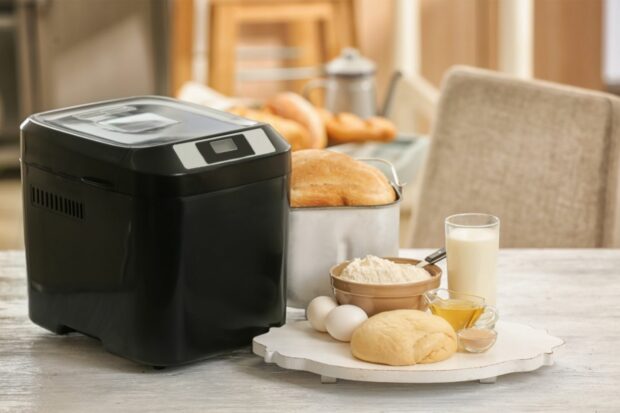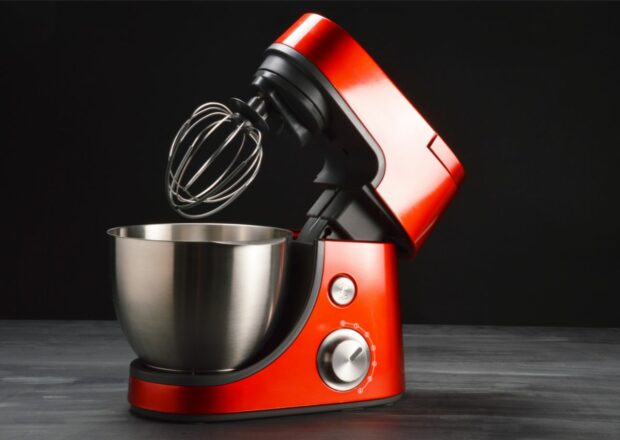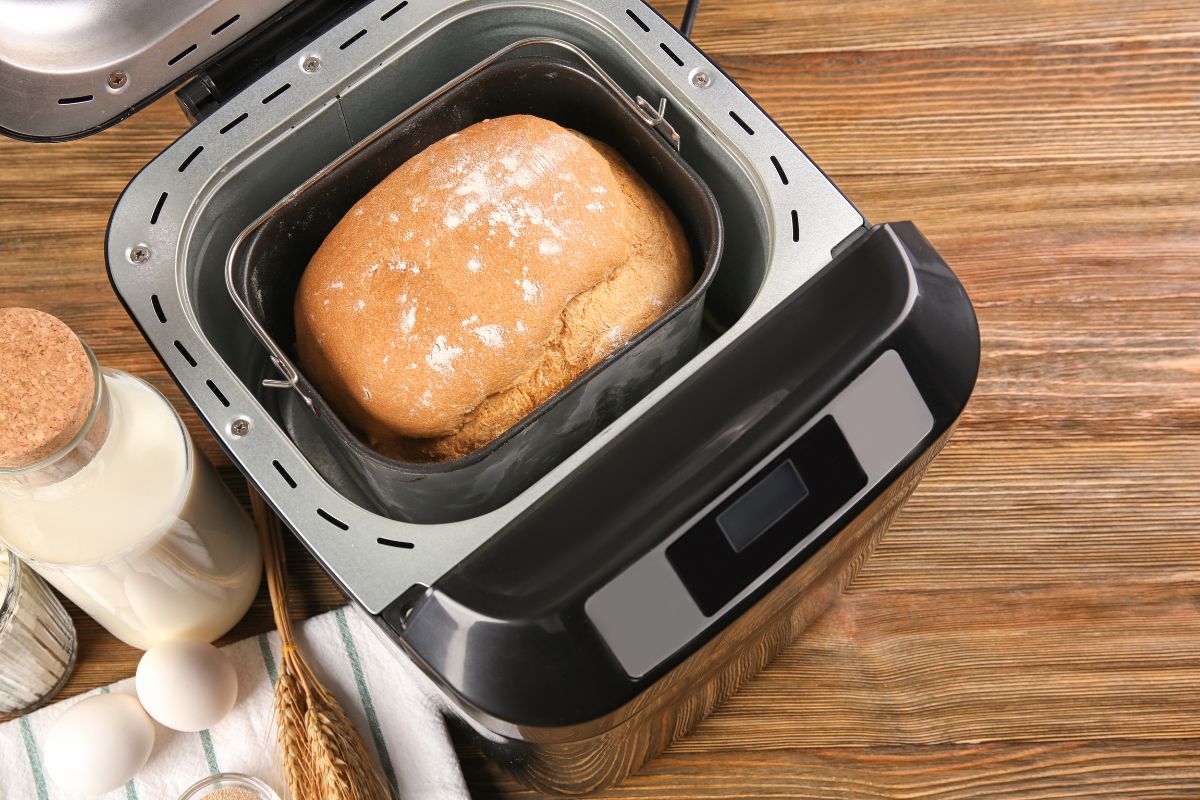Fresh bread is one of life’s simple pleasures. Bread baking, however, is a lot less simple. Even with the onslaught of sourdough tutorials during the pandemic, I still struggle to bake a decent loaf of bread.
I’ve long considered getting myself a bread maker so I can enjoy that fresh bread experience without the steep learning curve and constant attention required when making it by hand.
So recently I’ve found myself asking: Is a bread maker really worth the investment?
For me, the answer is yes. Whether or not a bread maker is a worthy addition to your kitchen will depend on several factors, such as how much bread your household consumes, how much time you have, and how you’ll actually use your bread maker.

You Probably Need a Bread Maker If. . .
You Eat a Lot of Bread
Bread makers aren’t particularly expensive, but a decent machine will still set you back a hundred dollars. Expect to shell out a bit more if you want all the bells and whistles. The investment is really only worth it if you’re going to use it regularly and it’s not going to end up on the isle of misfit kitchen gadgets.
If you typically buy one to two loaves of bread per week for your household and you replace them with freshly baked delights from your new bread maker, you’ll break even in no time. Eventually, you’ll save even more.
You Don’t Have Time To Spare
I won’t pretend that bread maker bread is better than an artisanal loaf you painstakingly knead, proof, and shape by hand. If you’ve got a knack for bread-making, you’ll likely find bread from a machine somewhat less elevated. Most of us, however, simply don’t have that kind of time.

If you want to wake up to the smell of fresh bread with very little effort, then a bread maker is worth every penny. Even lower-end models have programmable timers, so you can preset your machine to have fresh bread ready in the morning or just as you get home from work. This is the feature that really made the decision for me, and it absolutely makes up for any compromise on the quality of the loaves. There’s also far less cleanup than the flour storm I usually create when I bake.
You Don’t Bake
Just because you aren’t a baker doesn’t mean you can’t enjoy fresh baked bread. Technology has provided us with many a splendid gadget, and bread makers are one such delight. They are so simple to use that it’s incredibly hard to mess things up. Now it’s not impossible, but if you follow the bread recipes that come with your machine, or the endless recipes you find online, you can churn out delicious bread with absolutely no need for kitchen skills.
You Like To Experiment

There is so much more you can make in your bread maker than just bread. It actually blew my mind! Not only can you make other glutenous delights such as buns, pizza dough, and cinnamon buns but you can even make jam and yogurt. Yogurt and bread are actually quite similar in some respects: Fresh made is incomparably better than mass produced, but their creation is rather arduous. In both cases, the process is massively simplified through the use of this nifty and versatile kitchen gadget.
You Might Not Want a Bread Maker If. . .
You’re a Sourdough Fiend

Some machines come with a sourdough setting, and it is possible to make sourdough on the manual setting of your bread machine as well, but they are not known for producing sourdough of particularly great quality. The proofing and rising times are quite different for sourdough, and when using the machine on the manual setting, it does greatly reduce the simplicity and ease that make bread machines so alluring.
You’re Gluten-Free
Bread machines tend to struggle with gluten-free bread due to the weight of most gluten-free flours. It’s not impossible to make an alternative bread, and there are even some machines with specialized settings for it, but they tend to be unpredictable and inconsistent. Much like the entire gluten-free industry, I’m sure things will continue to improve, but for now gluten-free bread is still best made by hand.
You Have a Small Space
There are some smaller, sleeker machines, but for the most part a bread maker is a fairly bulky appliance, and they simply are not cute. You’ll need somewhere to store your machine, and if you’re going to utilize it frequently, you probably want to leave it out on the counter. Most machines weigh between 8 and 12 pounds, so you could store it in a cupboard, but hefting it around on a regular basis won’t be all that fun.
They are also known to be a bit loud and clunky, but only during the mixing and kneading phase—the first 30 minutes or so.
You Prefer a Stand Mixer

Some people compromise by using their bread machine for the finicky bits—mixing, kneading, and the all-important proofing (bread machines are their own little proofing drawers)—but then hand-shape and bake their loaves in the oven. This is a great way to get a more artisanal-style loaf while mostly avoiding the more intricate and time-consuming aspects. However, many people find that a good quality stand mixer can do this just as well and is more useful overall.
A Great Way To Get Started Making Bread
If you want to enjoy fresh homemade bread on the reg, but you’ve got a hectic lifestyle or simply lack the skills or interest to make bread by hand, then a bread maker is absolutely worth the investment. The money you’ll save over time easily makes up for the initial cost.
A bread maker does, however, remove the romance and accomplishment that comes with creating something nourishing with your own hands.
The great thing is, if you’re new to making bread, a machine can get you started on your journey, and perhaps over time you’ll start using it a bit less and your own hands a bit more.
